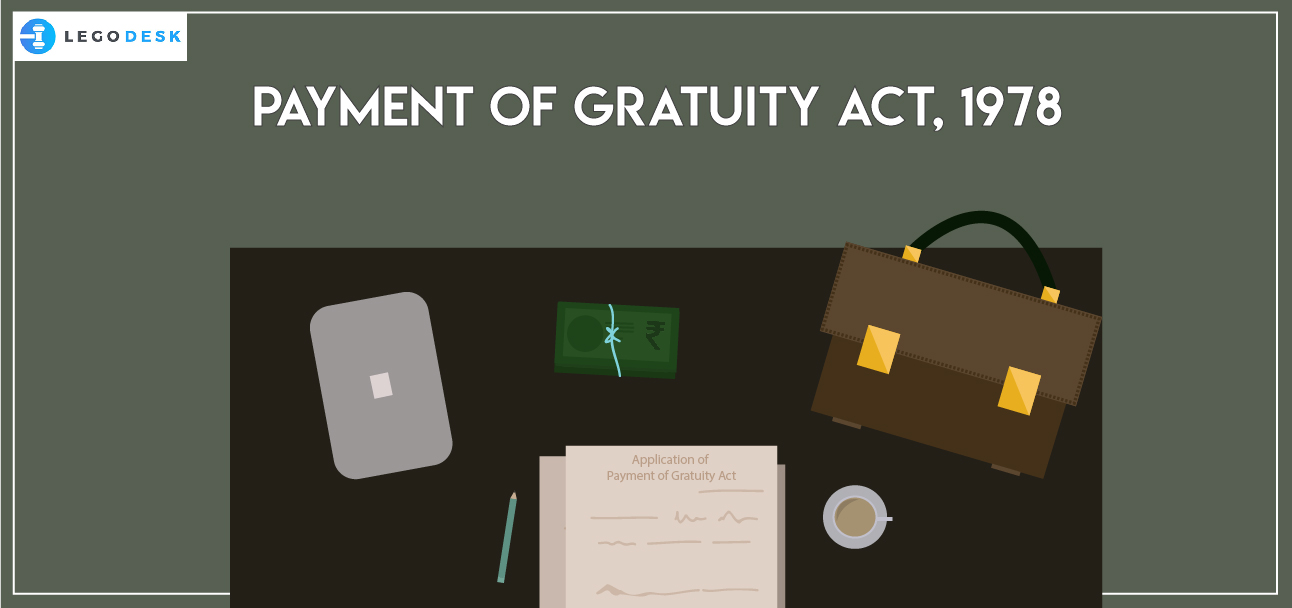
Gratuity is a statutory benefit for the employees. The employees with continuous service for five years, at least are eligible for Gratuity. Employees get gratuity at the end of their employment on the basis of their total term. Resignation, death, retirement or termination, etc, anything can be the reason for such end. Gratuity is one of the most important forms of social security. It’s one of the many retirement benefits that an employer offers to his employee as gratitude. As the salary and duration of employment increases, Payment of Gratuity also tends to increase.
Payment of Gratuity Act, 1978
The Payment of Gratuity Act, 1978 gives a scheme for the payment of gratuity. The employees engaged in railway companies, factories, oilfields, mines, plantations, ports, shops or other establishments. The Central Government, the State governments and Union Territory administrations administer Payment of Gratuity Act in different cases.
The employer can pay the gratuity proceeds from his current revenue. They may set a gratuity fund up as part of their financial planning. Many insurance companies have designed special schemes based on gratuity.
Application of Payment of Gratuity Act, 1978 and Amendments
The Payment of Gratuity Act, 1972 is applicable to the following:
- every factory, plantation, mine, oilfield, railway company, and port;
- every establishment or shop in which ten or more persons are or have been employed;
- such other establishments or class of establishments, in which ten or more employees are employed, or were employed, for any day of the preceding twelve months.
The Centre amended the Act in 2017 and 2018. The 2017 Amendment empowered the central government to;
- notify the maternity leave period eligible for qualifying as continuous service; and
- determine the gratuity amount available to employees.
The 2018 amendment substituted the words “twelve weeks” in section 2A of the principal Act, with “such period as may be notified by the Central Government from time to time”.
The Government focused budget of 2019 on the welfare of farmers and Middle class. For working classes, it increased the gratuity limit from Rs 10 lakh to Rs 20 lakh. With the implementation of the 7th Central Pay Commission, the ceiling got raised to Rs. 20 Lakhs.
Who will get payment of Gratuity?
An employee who has completed not less than five years of employment is entitled to gratuity. This pre-requisite is not important when the termination of the employment of any employee is because of death or disablement. Disablement would mean a disablement which incapacitates the employee for the work which he was able to perform before the accident or disease resulting in such disablement.
In the case of death of the employee, the payment of gratuity is made to his nominee. In case of no nomination, the payment’s made to his heirs.
Forfeiture of Gratuity
The gratuity of these following persons may be forfeited:
- In case of termination of an employee. This may be due to any act, willful omission or negligence causing any damage to property.
- The gratuity of an employee may be partially or wholly forfeited:
- termination of an employee for his riotous or disorderly conduct.
- in case of termination of an employee for any other act of violence on his part, or
- termination of an employee for any act which constitutes an offense involving moral turpitude.
Failure to Pay Gratuity Amount
To make the payment of gratuity is a statutory requirement. If an employer fails to pay the gratuity amount to an employee, he will be liable for punishment. In case of failure of gratuity payment, the employer shall be punishable with imprisonment for a term not less than six months and may extend to two years.
The remedy in case the Employer does not pay Gratuity
When the gratuity is not paid on time, the aggrieved person should take action. He should make an application to the Controlling Authority under the Payment of Gratuity Act. This authority may be within the area of the employer’s establishment or where the employee worked. The controlling authority will issue a certificate for that amount to the Collector. He shall recover the same, together with compound interest thereon. The Interest is at such rate as the Central Government may specify, from the date of expiry of the prescribed time.
Conclusion
An employee can also get a gratuity amount higher than Rs.10,00,000. The amount of Gratuity depends upon the number of years served. To calculate Gratuity, we can use the following way;
If,
N = number of years of work
B = last drawn basic salary with DA
then,
Gratuity = N*B*15/26.
This act brought a significant improvement in the existing Labour laws in India.

